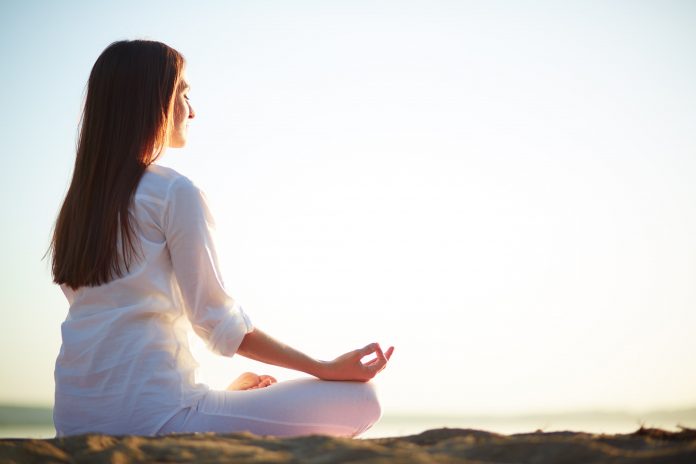In our increasingly connected world that promotes productivity, hyperactivity and the art of multitasking, meditation appears to many of us as a solution to this permanent exhaustion. If this practice is still unknown to you, welcome onboard.
What is meditation?
We often tend to think that to meditate is to do nothing and think of nothing. Yet meditation is a practice, something you do, that you experience. It is rather a state of consciousness, a way of being in the world has been difficult to define as there are so many types of meditation.
For the author, doctor in cellular genetics and Buddhist monk Matthieu Ricard, meditating “essentially allows you to learn to know yourself better and to cultivate an optimal way of being, namely happiness and altruism”. Meditation is also about “avoiding becoming a slave to the flow of negative thoughts that flood the mind.”
Meditating does not consist in chasing our thoughts and emptying, but rather in accepting these thoughts with kindness and not clinging to them.
There are many meditation techniques: Vipassana meditation, transcendental meditation, chakra mediation, zazen meditation…
The one we practice enlargement in the West, and in particular by psychiatrists, like the famous Christophe André, is mindfulness meditation. It consists of simply being there, in the present moment, without judgment and welcoming all the thoughts, sensations and emotions that come. It allows you to be fully aware of yourself and others, at every moment of your life.
Why meditate?
Meditate makes you closer to the world, to our environment, to understand and love it; and a way to cultivate serenity and happiness.
Meditating also means stopping, “stops doing,agitating, staying away from the world” , to better understand, open your eyes wide as we have never done.
The benefits of meditation on health and well-being have been widely demonstrated by scientific research which has found, in particular:
- A significant decrease in depressive symptoms
- An increase in emotional well-being
- A considerable reduction in stress
- A reduction in the frequency of migraines
- Reduced symptoms of burnout
Etc.
You Can Also Read : 5 Natural Home Remedies To Overcome Sadness
How to meditate?
We have already seen, there are many meditation techniques and the one that we use most often is mindfulness meditation.
To meditate, start by finding a place where you feel good. Eliminate distractions and sit comfortably.
In the Buddhist tradition, on meditation generally in the lotus position (knees on the ground, left foot placed on the right thigh and vice versa). If this position is uncomfortable, you can opt for the half-lotus (one of the legs remains flat on the calf of the other) or simply sit with your back straight, your chin slightly tucked in and your shoulders relaxed .
Then focus on your breathing. You can mentally count your inspirations and exhalations to stay focused.
When your mind meets wandering, return to your breathing with kindness, without judgment. Do not see your emotions and thoughts as intruders and do not try to control them. Just come back to your breath, then focus on your sensations, what’s going on in and around you, the sounds you hear (or the silence), the smells you smell …
Learn to meditate on the demands of time. Start by meditating a few minutes a day and increase the duration as you go.
You can also help yourself with guided meditations. You’ll find videos on YouTube, podcasts, and dedicated mobile apps. In many cities there are also stages, courses and workshops for learning to meditate.































